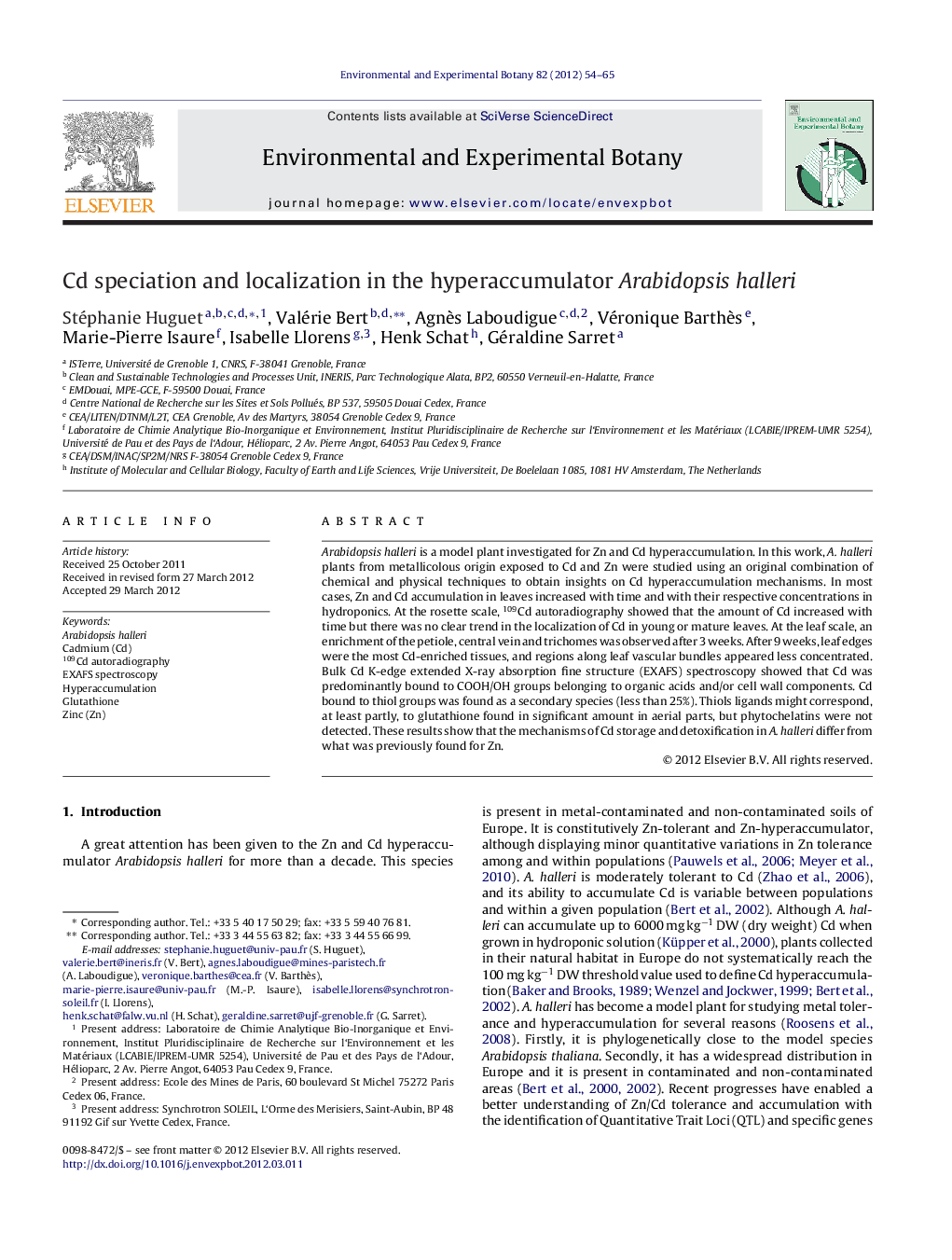| Article ID | Journal | Published Year | Pages | File Type |
|---|---|---|---|---|
| 4554604 | Environmental and Experimental Botany | 2012 | 12 Pages |
Arabidopsis halleri is a model plant investigated for Zn and Cd hyperaccumulation. In this work, A. halleri plants from metallicolous origin exposed to Cd and Zn were studied using an original combination of chemical and physical techniques to obtain insights on Cd hyperaccumulation mechanisms. In most cases, Zn and Cd accumulation in leaves increased with time and with their respective concentrations in hydroponics. At the rosette scale, 109Cd autoradiography showed that the amount of Cd increased with time but there was no clear trend in the localization of Cd in young or mature leaves. At the leaf scale, an enrichment of the petiole, central vein and trichomes was observed after 3 weeks. After 9 weeks, leaf edges were the most Cd-enriched tissues, and regions along leaf vascular bundles appeared less concentrated. Bulk Cd K-edge extended X-ray absorption fine structure (EXAFS) spectroscopy showed that Cd was predominantly bound to COOH/OH groups belonging to organic acids and/or cell wall components. Cd bound to thiol groups was found as a secondary species (less than 25%). Thiols ligands might correspond, at least partly, to glutathione found in significant amount in aerial parts, but phytochelatins were not detected. These results show that the mechanisms of Cd storage and detoxification in A. halleri differ from what was previously found for Zn.
► Arabidopsis halleri investigated for Cd localization and speciation. ► At rosette scale, no preferential Cd accumulation in young or mature leaves. ► At leaf scale, Cd was mainly stored in the leaf tissues. ► Cd predominantly bound to COOH/OH groups (organic acids and/or cell wall components). ► Thiol groups found as a secondary species might correspond to glutathione.
